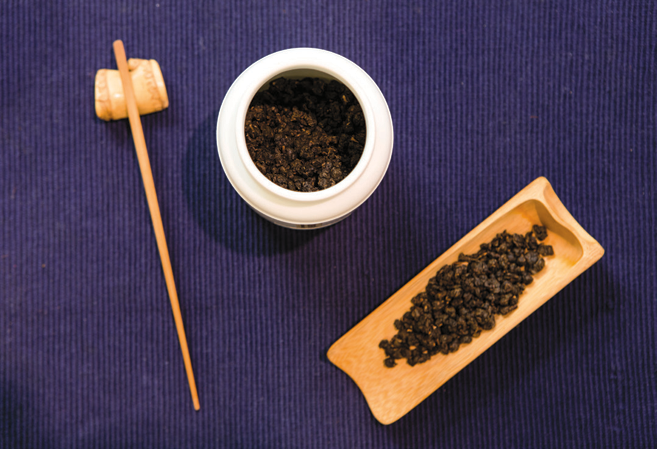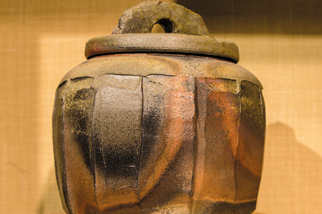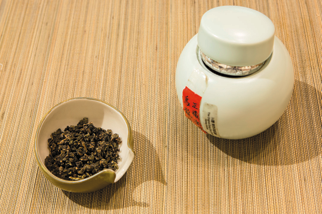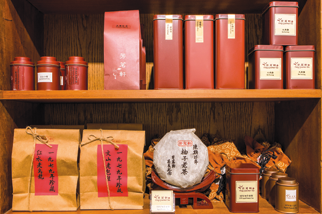A Good Tea is Hard to Find
Most of us think of tea and China like wine and France: The country’s teahouse culture dates back hundreds, even thousands of years and is still very much woven into the fabric of social life across China. New Yorkers’ passion for the depth and diversity of regional Chinese cuisine suggests we’d have plenty of options for teahouses and dim sum parlors serving first-rate tea from Shanghai to Yunnan. So where’s all the Chinese tea in New York?
While there are oodles of bubble tea houses across the city where you can get a week’s worth of sugar in a single to-go cup and sip tapioca balls through giant straws, the focus there is more on the bubble than the tea. Not even the famous Ten Ren chain offers Chinese tea served via the traditional gong fu cha style, despite the clay teapots on display in their Chinatown store.
But what if that’s what you want—to sit in a pagoda for a few hours drinking pure loose leaf from tiny cups like you’ve just landed in Chengdu? This is what gong fu cha (or kung fu) means, after all: taking the time to appreciate the craft of good tea. (“Kung fu” refers to anything done with great skill.) Gong fu cha (tea) is a style of brewing, doing multiple infusions via little teapots, with tea served in small porcelain cups. While variations of the gong fu style are common throughout China, many credit Chaozhou in the country’s eastern Guangdong province with its origin.
People directed me to Flushing as if it was a required pilgrimage. (It’s worth noting that tea is an afterthought at most dumpling houses, even in Flushing—New York’s Chinese food mecca.) I discovered that Fang Gourmet Tea was perhaps the only place to go for traditional gong fu cha in Queens, so I visited Main Street one rainy morning. It’s difficult to spot, even with the sign out front. First, you’ve got to make it through a neon- lit mall, past a few stalls plastered with cellphone ads and boxes of baby formula on the floor. Then you step through the bamboo entryway into a room with large wooden tables and shelves of exquisite teaware—it’s like falling down the rabbit hole to Wonderland, if Wonderland is sampling rare teas from China and Taiwan for $5 to $15 a steeping.
A woman named Pierra Cheung seated me at a long wooden table and recommended the Dong Ding oolong, known as the “honey aroma” tea from a famous mountain in central Taiwan. Like many Taiwanese oolongs, the cultivar was brought from China’s Wuyi Mountains in the 1800s and flourished in the region’s morning sunshine and afternoon mist, producing some of the world’s most coveted teas.
The tea-making process is transfixing—it looks like an old shell game: tea leaves being washed, liquid poured from vessel to vessel, then into thimble-sized cups, steeping after steeping. Gong fu cha is sometimes translated as “ceremony,” Cheung said, half laughing, perhaps because of the many different steps and utensils involved. “It isn’t really a ceremony, or performance. From the old days, true Chinese tea is about becoming aware of one’s innermost feelings—it should elevate the spirit.”
I came back the following week and asked for a classic Chinese tea. Cheung described “the traditional Chinese taste” as dark and heavily roasted, compared with the recent trend toward greener, more floral oolongs. Oolongs fall somewhere between green and black teas and can exhibit a wide range of flavors depending on oxidation and roasting levels.
I sampled a roasted Tie Guan Yin, also known as the Iron Goddess of Mercy, sourced from Anxi, in the Fujian province. Wine lovers sometimes say that vino can taste like wet rock or liquefied stone. This is exactly what you get from the more classically roasted Tie Guan Yins, along with a strong sense of Wuyi’s rocky terrain. This time, the tea was served in a porous clay Yixing pot that absorbs tea flavors over time, resulting in a different taste from tea brewed in a porcelain gaiwan (cup) or Western glass pot. It’s an earthier drinking experience. A skilled tea maker may choose a gaiwan or Yixing pot to brew tea based on the tea’s character and what qualities he or she wants to draw out.
Through many steepings of the same tea, I noticed how each serving changed. Grateful for the time and the silence, I was struck by how much this time-honored, meditative practice matters in modern life—the essential luxury of stopping to notice the same tea change from a cloudy day to something bright and summery in the next steeping.
I described the last sip of another oolong from Taiwan’s Li Shan mountains as lemony. Cheung said, “I think it’s more like longan, an Asian fruit similar to lychee,” noting that the charcoal used to roast the tea was from the longan tree. “The kind of roasting charcoal will make every tea taste different,” she added, indicating that it can be found in just about every shop on Main St.
I was left wondering: Why isn’t the gong fu cha style of brewing more popular in a city that’s fallen head over heels for the incredible diversity of Chinese cuisine? It’s hard to say for sure, and Cheung mentioned that it’s a challenge to find good tea, even in China. But if it’s gong fu cha you’re after, Fang Gourmet Tea may be the next best thing to booking a flight to Chengdu.










